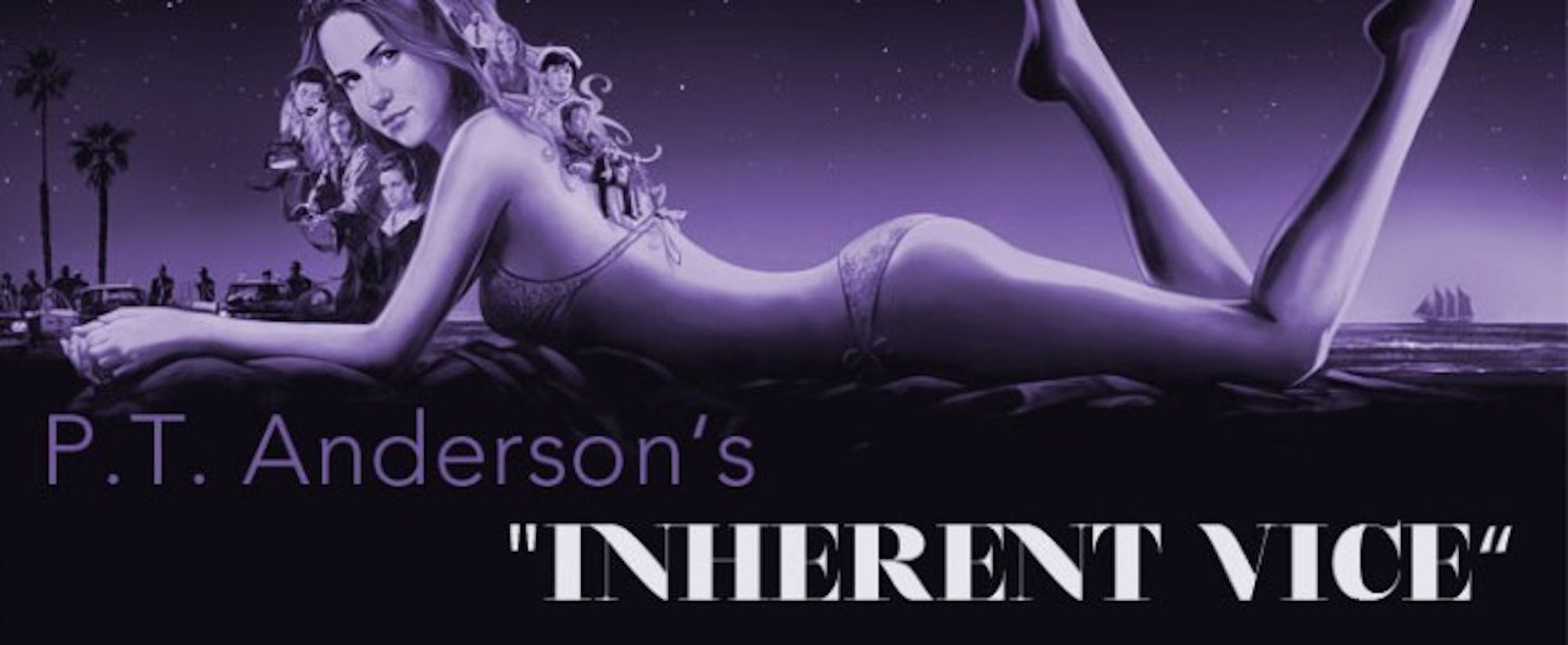
If you’re a fan of freak folk or a Pitchfork disciple, the opening lines of “Inherent Vice” may be a bit bewildering. As the camera pans over a California beach house in the dark of night, a voiceover begins from the unique and perhaps familiar voice of Joanna Newsom — usually known as a harpist and singer — as Sortilège, the film’s narrator and, at times, friendly guide in a drugged-up, whirlwind of a story.
You don’t need to know who Joanna Newsom is, however, to be bewildered by “Inherent Vice.” Director P.T. Anderson’s latest film, an adaptation of Thomas Pynchon’s 2009 novel, is a disorienting trip through and through, but it’s certainly one worth taking.
In the opening shots, Sortilège describes the atmosphere of southern California in the year 1970 in astrological explanations and 70s slang, setting the stage for the story of Doc (Joaquin Phoenix), a private detective and public hippie who is sent on a wild goose chase through the crimes and conspiracies of California’s drug scene.
One night, Doc is visited by his former girlfriend, Shasta (Katherine Waterston), who appears out of the blue to ask for help. Shasta tells Doc she is caught up in a plan to disappear a married mogul she has been seeing, but is worried about what will happen to him. But Shasta’s visit to Doc is almost like a mirage — hazy and dreamlike — and she vanishes soon after asking him for help.
Doc, of course, is left with more questions than answers, but that is the theme throughout “Inherent Vice.” Rather than play out like a classic detective story, with a skillful uncovering of useful clues and leads that push the protagonist towards the big reveal, “Inherent Vice” dizzies its audience with characters and subplots until the film’s very end.
Like the constantly high Doc, viewers are almost constantly confused by the story, but plot — or even the mystery itself — isn’t what drives the film. Instead, “Inherent Vice” relishes in the time, place and people, making it a bizarre mix of stoner comedy and period piece that gives a super-saturated snapshot of the aftermath of the 1960s.
“Inherent Vice” isn’t P.T. Anderson’s best film, but it doesn’t have to be. Instead, the movie works like “Midnight in Paris” or “Grand Budapest Hotel,” where you can delight in the setting and characters (and even the actors playing them) with a certain lightheartedness rarely found in front of P.T. Anderson’s lens.
But while a film like “Midnight in Paris” plays out like a mindless walk in the park, “Inherent Vice” takes the opposite approach, piling on so many players and connections in Doc’s investigation, the audience must, at some point, resign to enjoying only what is happening immediately in front of them. This, of course, mirrors the shortsightedness of the characters the film caused by their drug-induced fog.
It’s hard to say, then, what the takeaway of “Inherent Vice” exactly is. Its ending is underwhelming; its message is unclear, but one aspect of the film that resonates after its neon credits roll is the relationship between Doc and his frenemy (there is no other word), Detective “Bigfoot” Bjornsen (Josh Brolin). The interaction between the two men, one a P.I. hippie and the other a clean-cut police officer, is easily the most entertaining and fascinating part of the film, and Anderson’s way of conveying their complicated friendship grounds the film in some small way.
As dizzying and outrageous as the rest of the film is, “Inherent Vice” is still a pleasure to watch. Though its viewers may grow frustrated with its lack of direction or message, letting go and embracing its chaos pays off, and Sortilège says, “With Doc, it may all start to get a little peculiar after that.”













